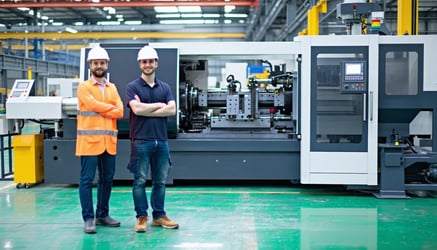Injection molding is a precise art, and even the slightest deviation can lead to parts sticking, affecting the overall quality and efficiency of the production process. If you're facing such challenges, you're not alone. Many injection molders grapple with similar issues, often resorting to costly mold releases. But before you go that route, let's dive deep into the root causes and solutions.
Understanding the Issue
Parts sticking in the mold aren't just a minor inconvenience. It can lead to production delays, increased costs, and even damage to the mold. While looking for quick fixes is tempting, it's crucial to understand the underlying problem. Whether you're dealing with a new or old tool, the key is identifying the root cause and addressing it systematically.
The 5 M's Troubleshooting Method
Before we delve into the specifics, it's worth revisiting the 5 M's troubleshooting method. This approach helps narrow down potential variables, making the problem more manageable.
The 5 M's are:
- Manual Part Removal: Consistency is critical. Inconsistent cycle times or clamp open times can lead to parts sticking. Ensure each part is ejected correctly without getting caught on pins, ribs, or other details. Check the ejector plate's movement and ensure that spring-loaded plates function correctly.
- Machine: The molding machine's condition plays a pivotal role. Ensure the correct knock-out bars are in place and all hydraulic lines and electrical cords function. Check for rolled edges on parting lines, which can cause parts to stick.
- Mold: A damaged mold can be a primary culprit. Check for any signs of wear and tear, especially on details, ribs, or clip towers. Ensure that the mold is clean, free from burrs, and that water circulation is optimal. Improper mold temperatures can also lead to parts sticking.
- Method: A robust process is essential. Over-packing or under-packing can lead to parts sticking, especially in ribbed areas. Ensure that the cure time is adequate and that there's no mold deflection.
- Material: Using the correct material is crucial. Different materials shrink at varying rates, and even colorants can play a role. Ensure that you're using the right material, and if you're using regrind, check its percentage and generation.
The Asaclean Advantage
While addressing the above variables is essential, there's another aspect that can significantly reduce downtime and enhance efficiency: purging compounds. We designed Asaclean to work seamlessly with the injection molding process, ensuring your molds remain clean and free from contaminants.
By integrating Asaclean Purging Compounds into your routine, you can address parts sticking issues and prolong the life of your molds, reduce scrap rates, and enhance overall production efficiency.
Conclusion
Injection molding (with hot runners or high cavitation molds) is a complex process, and parts sticking can be a persistent challenge. However, you can address this issue head-on with a systematic approach and the right tools. Remember, it's not just about finding a quick fix but understanding the root cause and implementing long-term solutions. And with Asaclean by your side, you're always one step ahead.
Interested in solving your molding issues with Asaclean? Request a Free Sample of Asaclean Today.

Tom Hanvey is the Associate Director of Marketing & Sustainability at Plastics North America. Before joining APNA, he worked as the Senior Marketing Manager for Asaclean Purging Compounds. He's worked in the plastics industry for over 10 years and focuses on recyclable resins and on the inbound marketing side, providing easy-to-digest content to processors looking for an edge on their competition.







Comments